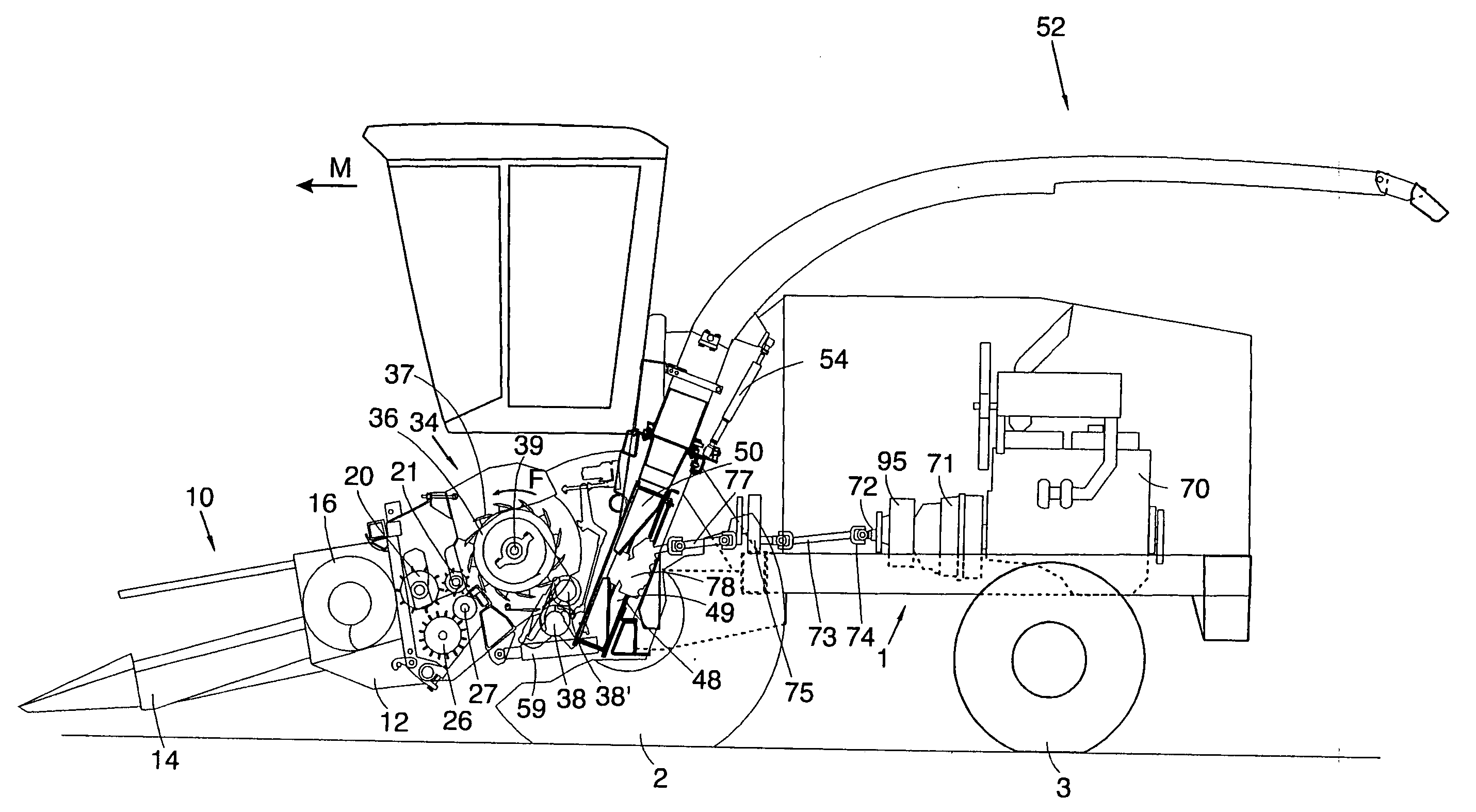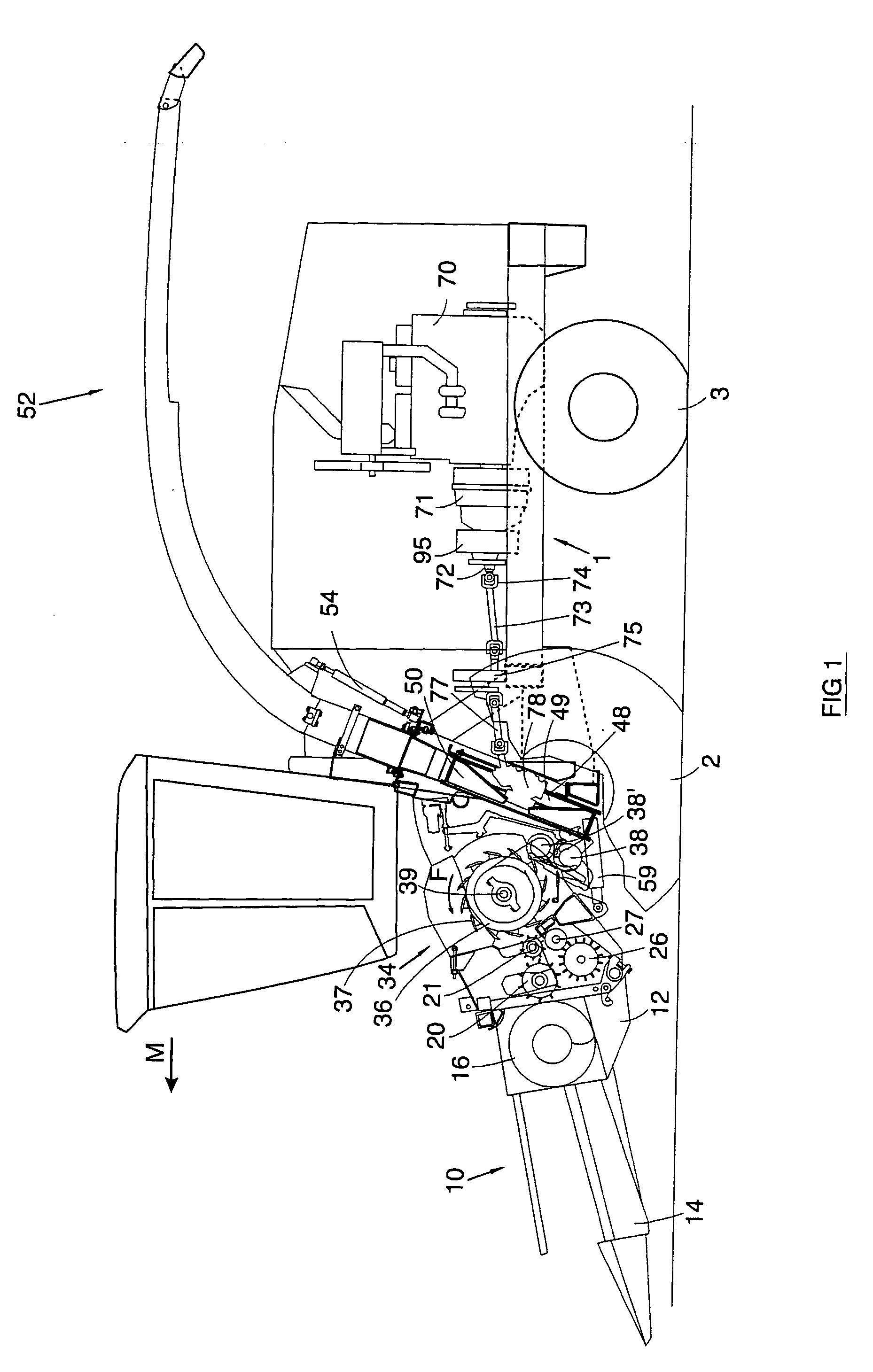Agricultural harvesting machines and front attachments therefor
a harvesting machine and a technology for tractors, applied in the field of agricultural machinery, can solve the problems of hammering the crop flow, material passing under it, material being lost, etc., and achieves the effects of smooth feeding, improved efficiency and reliability, and improved input speed
- Summary
- Abstract
- Description
- Claims
- Application Information
AI Technical Summary
Benefits of technology
Problems solved by technology
Method used
Image
Examples
Embodiment Construction
[0048] The present invention will be described with reference to an embodiment of a forage harvester and to certain drawings but the invention is not limited thereto but only by the claims. The drawings are schematic. The terms “front”, “rear”, “forward”, “rearward”, “right” and “left” used throughout the specification are determined with respect to the normal direction of movement of the machine in harvesting operation, as indicated by arrow M on FIG. 1, and are not to be construed as limiting terms.
[0049] With reference to the drawings and more particularly to FIG. 1, there is shown a forage harvester having a main frame 1 on which are mounted ground engaging traction wheels 2 and steering wheels 3. The forage harvester is shown equipped with a crop collecting apparatus / header, in the form of a row crop header attachment 10, suitable for the harvesting of maize, but which can be replaced with a conventional windrow pick-up device or a conventional cutter bar attachment, depending...
PUM
 Login to View More
Login to View More Abstract
Description
Claims
Application Information
 Login to View More
Login to View More - R&D
- Intellectual Property
- Life Sciences
- Materials
- Tech Scout
- Unparalleled Data Quality
- Higher Quality Content
- 60% Fewer Hallucinations
Browse by: Latest US Patents, China's latest patents, Technical Efficacy Thesaurus, Application Domain, Technology Topic, Popular Technical Reports.
© 2025 PatSnap. All rights reserved.Legal|Privacy policy|Modern Slavery Act Transparency Statement|Sitemap|About US| Contact US: help@patsnap.com



